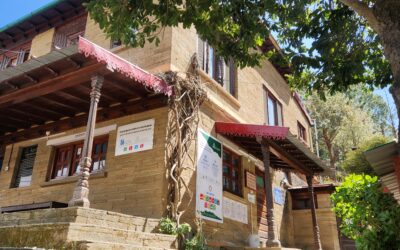Living in a tribal community from last 11 months has made me realize the ease with which they lead their life. Every newborn in the family plays and have fun within the house for first 3 years. They get used to the lifestyle. They get fed with page (Staple food) and ant chutney which reduces the chances of malaria. Parents carry them around the village.
By age 5 or 6, they get to know everyone in the village. They live close to nature and their entire life is connected with it. All the activities they do, somehow involves the environment around them. Their year is planned according to the nature and they follow it accordingly. In the month of January, everyone is involved in “Daan Mindayi” which means threshing the crop to get rice out of it. Once they are done with that, the grains are transported from field to house, for the storage. After that, people relax and also start celebrating their happiness as well as gratitude towards gods and goddess.
February is a festive season in villages as there’s crop at home. Every village fixes a date to invite friends and relatives from other villages, and they celebrate with several offerings to God. At this time, they make a special dish called “Landa”. It’s a drink made out of fresh rice grains, which are stored for 3-4 days before grinding. The drink is then offered to guests. Everyone in the village celebrates mela (a local fair) for 2-3 days and then they visit neighboring villages to celebrate with people living there.
Once they are done with crop celebration in March, a major event is the fall of “Mahua” flower. Tribes in Bastar region are widely dependent on Mahua. It’s a plant which is used in different ways. The flower is used in making alcohol, the seeds for making oil while the roots become ingredients for different medicines. When, Mahua starts falling from trees, every member of the family goes to their respective Mahua trees and collect the fallen flowers. They dry it under the sun, and it goes on until mid of April.
Before the end of Mahua season, people burn their fields to destroy weeds so that it helps Tendu plant to grow. Tendu pattha (leaf) is also a major livelihood activity where the whole family gets involved in the month of April and May. During this season, small Tendu plants tend to have fresh leaves. Everyone collectively plucks those leaves, dries them up and sells to government officials. Mainly these leaves are used in making Beedi (a local form of cigarette).
Apart from these livelihood activities, people also involve themselves in hunting during summer. Since there are no natural conditions to grow vegetables in this season, they mainly depend on animal meat. Besides, all weddings are planned during summer. Right after, Mango season starts when all villagers gather at a place to celebrate “Aama Pandu” (mango festival). They cut the mango, cook it, offer it to God and then eat it. There’s another festival called “Beeja Pandu” (mango seed). They pluck the mangoes, chop the raw ones and sell them.
Next, they clear their fields and start plowing it to prepare before the rain starts. This happens in the month of June and they sow seeds after the first rain. From July to September, people are usually involved in agriculture. Once they have the first round of grains, they celebrate “Daan” festival, a symbol of happiness derived from seeing their crop. Again, the first few grains are offered to god and they go back to fields in order to protect the crop.
In October, we all celebrate Dussehra and Diwali, but in Bastar, they do it differently. They have the longest Dussehra which goes on for 70 days. It involves various activities and then all the people walk to Dantewada where goddess Danteshwari maata was once found. From there, they carry her sculpture 80 km away to Jagdalpur. On the main day of Dussehra, the king of Bastar offers prayers to goddess marking an end to the event.
Once the crop is fully grown by November, it is cut and stored in the field after which the vegetables are sowed. During this season, tomato is the major food crop. They produce it on a large scale and the entire December month goes in cultivating food crops. Again, from January, threshing starts. Without the intervention of outside forces, the entire year of tribal people in Bastar is well planned as per nature and nothing has changed until now.




Such a thoughtful post! thoroughly enjoyed reading it. You offered a complete picture of what an year in Bastar feels like. Strange how similar it is with the communities in South Rajasthan. Keep sharing.
Thanks a lot! Yeah I too got to know that most of the tribes lifestyles are kind of similar.